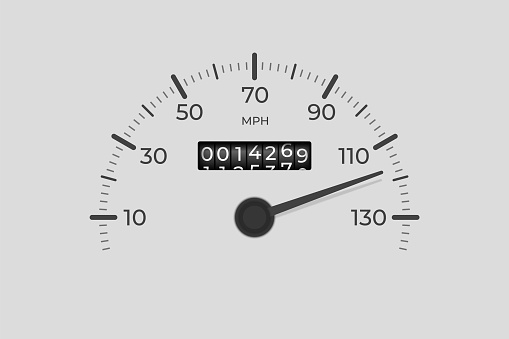Why Gas Prices Are Unlikely to Come Down in 2022
Gas prices remain higher than they were a year ago, with the national average hovering around $3.88 per gallon. Unfortunately, we’re not likely to see the price drop this year. The good news, though, is that despite significant market volatility, the price of crude oil is expected to drop in 2023. Although it’s easy to blame the gas stations or even the White House, they don’t have as much control over the situation as you might expect. The global landscape is complex, and there are several factors influencing how much you pay at the gas pump.
The Link Between Crude Oil and Retail Gas Prices
To understand the price of retail gasoline, it’s important to factor in the price of crude oil. Crude oil largely makes up the price of gas—by nearly as much as 60%, according to the Energy Information Administration.
Oil prices in the U.S. are primarily tracked with West Texas Intermediate, a type of crude oil that’s used as one of the primary global oil benchmarks for oil futures. When you see a WTI price mentioned in the news, it’s referring to the price buyers have contractually agreed to purchase a barrel of crude oil by a specific date in the future. Called the “front month” this price reflects future contracts that are expiring close to the current date. At the moment, WTI prices are similar to Brent crude, one of the main benchmarks for European and global oil futures.
In July, the WTI prices for crude oil dropped below $100 a barrel for the first time since May. The cost of crude oil had risen in late February, with Russia’s invasion of Ukraine and the concern from investors over potential economic sanctions. However, oil prices had already been on the rise since 2020, due to worldwide pandemic shutdowns. During the pandemic, WTI barely traded above $40 a barrel; increased demand and the uptick in economic activity in 2021 led to WTI rising as much as the low $80s. During the first quarter of 2022, crude oil reached the high $80s and low $90s.
Since retail gas prices are tied to crude oil prices, we’ve seen these fluctuations at the gas pump. Regular-grade gas was on average as low as $1.77 a gallon in April 2020, rising to as much as $2.85 in March 2021. The price of crude spiked in March 2022, causing the national average price of retail gas to reach over $4.00 a gallon—and it hasn’t gone down much since. Gas prices reached record highs this July—just as crude oil prices peaked.
The Russian invasion of Ukraine has made crude oil prices especially volatile, with barrels reaching over $120 in early June. The war itself, as well as inflation, economic sanctions, rising interest rates, and lower global demand due to high shipping costs, has led to increasing unpredictability in the market. The EIA predicts WTI prices will stay around $102 per barrel, then drop to around $93 in 2023, however, it’s difficult to say for sure what the future will bring.
Federal Regulations Also Add to the Costs
Although gasoline and diesel are the primary products made from crude oil in the U.S., crude is also used to make jet fuel, kerosene, asphalt, solvents, and other petroleum products. These 9000 or so smaller oil producers make up different parts of the market and have a variety of state regulatory mandates they need to follow outside of those for gasoline and oil producers—and all the mandates also affect the overall costs.
For example, the Environmental Protection Agency (EPA) requires gas producers to create at least 14 different gasoline blends (tailored by region) for the summertime. Some of these regions also need to switch to a winter blend. The Renewable Fuel Standard Program requires more ethanol and biodiesel than is feasible for the industry to produce, which has contributed to higher ethanol credit prices that refiners need to buy in order to stay in compliance.
In addition, premium and mid-grade gas need special additives that are costlier to make—and these additional costs are passed onto consumers.
Gas Stations and the White House Aren’t to Blame
On July 2, President Biden tweeted a message to gas stations: “My message to the companies running gas stations and setting prices at the pump is simple: this is a time of war and global peril. Bring down the price you are charging at the pump to reflect the cost you’re paying for the product. And do it now.” But are gas stations really to blame?
According to the Association for Convenient and Fuel Retailing, the majority of gas stations across the country only make around 10 cents a gallon after factoring in their fees and costs. Many gas stations make most of their money from selling convenience items, such as drinks and snacks, rather than gas. Since oil companies and gas stations are part of a national and global market, they can’t really control what happens on a larger scale.
On October 5, the Organization of the Petroleum Exporting Companies (OPEC), which is responsible for producing around 90% of the world’s oil reserves, approved cutting back oil production by two million barrels a day—a decision that will undoubtedly affect the already restricted global supply. The White House announced President Biden’s disappointment at the decision, calling it “shortsighted” in regard to the state of the global economy and the ongoing invasion of Ukraine.
This decrease in production is scheduled to begin in November—and experts believe we can expect to see increases in gas prices by as much as 15-30 cents per gallon this winter. According to a AAA spokesperson, two trends may reduce the price hikes at the pumps: the oil market has been anticipating the potential of a recession lowering the demand for crude oil, and many drivers cut back on driving during the winter months due to the harsher weather conditions.
In the meantime, the White House is planning to release another 10 million barrels of crude from the Strategic Oil Reserve next month. Currently, 1 million barrels are released per day, which is set to expire at the end of October. The U.S. Treasury estimates this strategy has helped cut gas prices by as much as 40 cents per gallon. The White House has also been looking into a way to increase domestic oil production to help lower the cost of gas.
How to Spend Less at the Pump in the Meantime
Understandably, the spike in gas prices comes at an inconvenient time, as we all gear up for the busy holiday season and the inevitable shopping and traveling it brings. Fortunately, there are a few things you can do to save money at the pump:
- Use apps like GasBuddy to find the cheapest gas near you
- Enroll in a gas rewards program
- Use a rewards credit card to buy gas
Most importantly, make sure your vehicle is caught up on preventive maintenance and repairs. Many automotive issues can lower your gas mileage, from improper tire pressure and old oil to clogged or damaged oxygen sensors.
Contact Signal Garage today to keep your car in top shape so that you can maximize gas mileage and minimize your cost at the pump!

